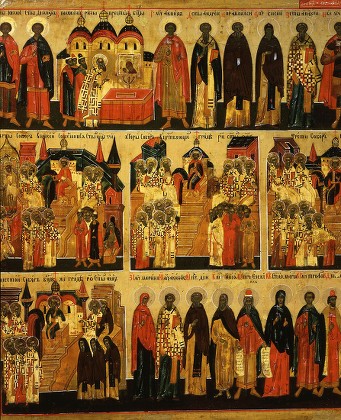The Council of Nicaea in AD 325 stands as a monumental juncture in the history of Christianity—a confluence of theological debate and ecclesiastical authority that forged the bedrock of Christian orthodoxy. Convoked by Emperor Constantine I, this gathering of bishops aimed to address the burgeoning theological disputes that threatened to fracture the nascent Church, much like a painter perennially striving to blend diverse colors into a coherent tableau. Central to these debates was the Arian controversy, which questioned the very nature of Christ and His relationship to God the Father, prompting the assembly to clarify foundational doctrines that would endure through centuries.
The backdrop of Nicaea is as significant as the council itself. Constantine, having witnessed the fractiousness among Christians, sought both unity for political stability and a personal conversion that would legitimize his role as a heavenly appointed leader. The emperor’s influence ensured that the council would not only convene but also exert considerable power in determining the ideological trajectory of Christianity. The city of Nicaea, a serene coastal guard of Bithynia, became the cradle of Christian orthodoxy, as bishops from varied geographic and theological backgrounds convened with one common purpose—to delineate the faith once delivered to the saints.
At the heart of the deliberations was the debate surrounding the nature of Christ. The presiding issue revolved around Arius’s assertion that the Son was created by the Father and therefore neither co-eternal nor consubstantial with Him. This assertion sent ripples of concern through the council as it implied a subordinate status for the Son—a concept that many bishops found theologically untenable. The resulting division echoed through the chamber like the haunting resonance of an unresolved chord in a symphony, with passionate advocates on both sides vying for elaboration and acceptance of their viewpoints.
One must appreciate the theological artistry displayed during the sessions. The bishops, much like sculptors chiseling away at marble to reveal an intricate statue, engaged in a careful exercise of doctrinal definition. The nascent Nicene Creed, birthed from these discussions in June of 325, became a decisive articulation of the faith: “We believe in one God, the Father Almighty, Maker of heaven and earth, and of all things visible and invisible. And in one Lord Jesus Christ, the only begotten Son of God, begotten of the Father before all worlds.” This clarion declaration was not merely a textual agreement but rather an encapsulation of divine mystery—asserting the equality and co-eternity of Christ with God the Father, an affirmation pivotal for the cohesion of the Christian belief system.
Furthermore, the council addressed the heterodox teachings of the time by establishing a theological and ecclesiastical framework. The dangers of heresy loomed large, much like weeds threatening the growth of a cultivated garden. The decrees rendered in Nicaea sought to ensure a robust orthodoxy that would fortify the Christian community against the encroachment of divergent beliefs. The bishops condemned Arianism, affirming that the Son is “true God from true God,” a proclamation emphasizing the unified divine essence shared between the Father and Son, consolidating the edifice of Christian doctrine.
Beyond theological discussions, the council also implemented practical measures aimed at ecclesiastical discipline and harmony among communities. The canon of the council, which addressed various issues—ranging from the date of Easter to the proper conduct of clergy—sought to instantiate a sense of order and conformity. Each canon was a brushstroke applied to the canvas of the church’s governance, enhancing its structure and aesthetics alike.
The repercussions of the Council of Nicaea reverberated throughout Christendom as it laid the groundwork for subsequent ecumenical councils. Its ramifications shaped the ecclesiological framework that influenced theological thought, liturgical practices, and the authoritative structure of the Church. The Nicene Creed, as it evolved, became central to various denominations and served as a unifying force amidst growing diversities of belief. In many ways, the creed represents a spiritual anchorage, a lighthouse guiding the faithful amidst tumultuous theological seas.
Reflecting upon the significance of the Council of Nicaea invites contemplation on the nature of truth and consensus within faith communities. It illustrates the profound struggle involved in articulating divine truths while grappling with the limitations of human language and understanding. It emphasizes that orthodoxy is not merely a set of rigid doctrines but rather a dynamic interplay of faith, reason, and community discernment. Through deliberation and debate, a medley of voices converge to forge an understanding that seeks to echo the eternal truths of the divine.
Today, as the Church continues to navigate the complexities and diversities of global Christianity, the lessons gleaned from the Council of Nicaea remain pertinent. The necessity of dialogues—spanning doctrinal disputes to ethical dilemmas—underscores the ongoing quest for unity in the Body of Christ. The Council of Nicaea stands as a testament to human effort in pursuit of divine truth—a reminder that the journey towards understanding is fraught with challenges, and yet, strikingly beautiful in its unfolding narrative of faith.
In summation, the Council of Nicaea in AD 325 was not simply a historical event but a momentous chapter in the Christian story. It was the crucible wherein the early Church wrestled with profound theological inquiries, ultimately crafting a foundational document that would guide future generations. Its legacy of fostering unity amidst diversity resonates even today, urging the Church to remain vigilant in its pursuit of truth while embracing the harmonious spirit of communion. The echoes of Nicaea reverberate through the annals of history, an indelible mark of collective faith’s endeavor to articulate the ineffable reality of divine love.



